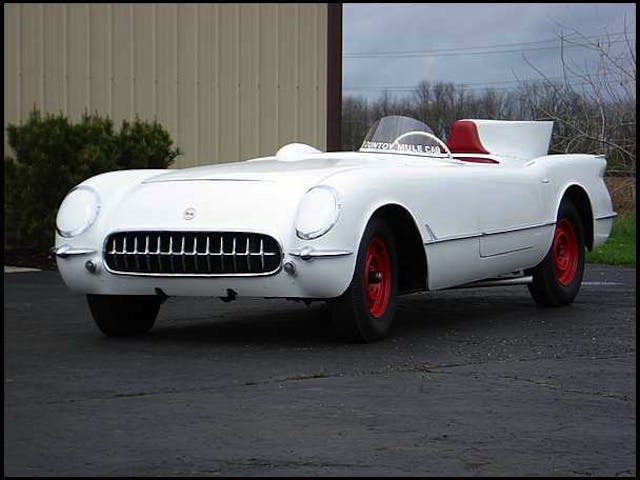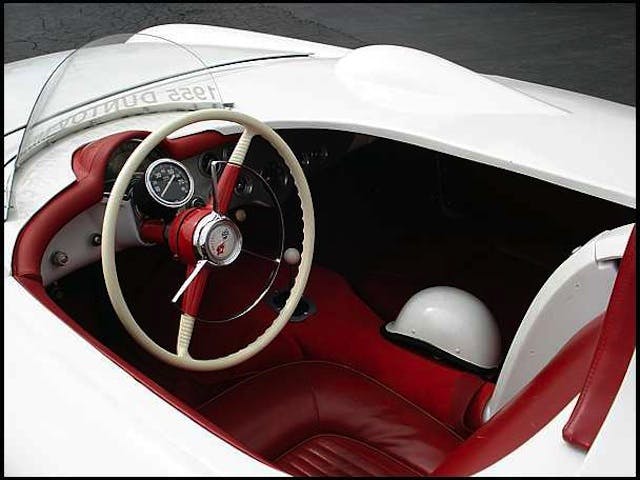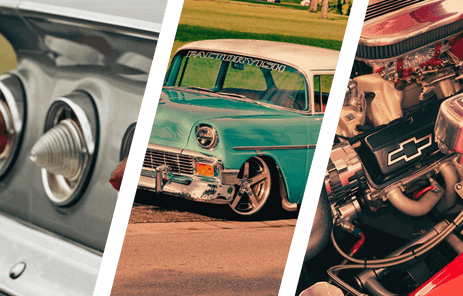While Zora-Arkus Duntov, a Russian-born engineer, was working for Chevrolet during the mid 1950s, he began to tinker with the Corvette that became his first “test mule.” Long before the ‘Vette became the patron saint of road-race America, Duntov was interested in finding ways to make the Corvette compete or keep-up with the best, including Jaguar, that the small sports car market of the ’50s had to offer.
About a year and a half earlier, GM chief engineer and Indy 500 veteran, Mauri Rose, worked with Daytona racing legend Smokey Yunick to build an experimental version of a ’54 Vette that had a prototype V8 engine in it, the same V8 that Duntov himself later punched-out from a 283 to a 307 cubic-inch, race-built motor. After testing was finished on the prototype ‘Vette, it was given the factory designation of EX87 by Engineering and given by them to Duntov so that he could run the car at an upcoming record run at Daytona Beach in January of 1956. Upon acquiring the EX87 car, Duntov modified it by replacing the windshield with a curved, race-profile windscreen, a tonneau cover over the passenger side of the car and a fiberglass headrest-fin that was built for high-speed stability – all design techniques that Duntov had learned from Jaguar.
Another major modification that Duntov made to the ‘Vette was its prototype racing V8, an engine build that would become the EX87’s most distinguishing feature. Duntov not only bored the 283 to a 307 cubic-inch displacement, but custom-ordered a camshaft from Chevy Engineering that would help the very first, V8-powered ‘Vette to achieve a top speed of 163 MPH at GM’s Arizona Desert Proving Ground. Today, these kind of track speeds are very much taken for granted, but a top speed of over 160 was phenomenal by 1955 standards.
Sadly, the race legend who was Smokey Yunick passed away in 2001, leaving behind a garage full of automotive relics. His widow had asked his old friend, Steve Tate, if he would like to come to Daytona to look at some stuff that Yunick had left behind. Sure enough, Tate came across a specially-marked engine, the 307 V8 that was built for the EX87, and it was labeled “Record Run.” Tate would buy the engine, along with its original logbook from Chevy. He would eventually track down the EX87 car as well, and would get together with close friends to spend the next year restoring it. Still known as the very first V8 ‘Vette, the EX87 is a rare piece of performance history that will always be remembered as “the original.”
You might also like
SEMA 2025: The Reimagined Chevelle 70/SS Steals The Big Show
Trans Am Worldwide revives the 1970 Chevelle with the modern 70/SS. The limited-run supercar drew huge crowds at SEMA 2025.




